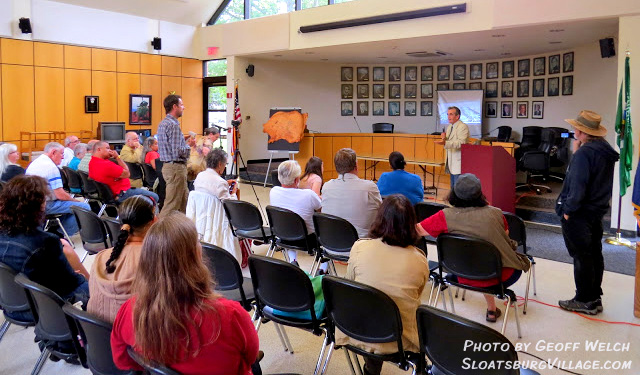
Chuck Stead presents his interdisciplinary Recovery Narrative PhD dissertation to the public at Ramapo Town Hall. / Photo by Geoff Welch
The long story of life in the shadow of Torne Mountain made its way to the Ramapo’s Town Hall when environmental educator Chuck Stead presented his doctoral dissertation to the public last week. An interdisciplinary recovery narrative, Stead’s story is also a history of Torne and Western Ramapo that traces industrial impact on the area’s community and uses ecotoxicology and memoir to weave together a complex story of Ford Motor Company’s toxic legacy in and around Torne Valley.
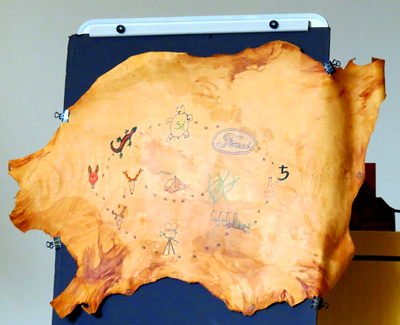
Skin that details steps in the narrative of Chuck Stead’s PhD studies, including toxic sludge cleanup in Torne Valley.
Friends, family and members of the Ramapough community gathered at Ramapo Town Hall where Stead presented an overview of his work and took questions from the audience. Stead received his PhD from Antioch University New England (AUNE) in May and the university made an exception that allowed Stead’s dissertation defense to be held locally and with public participation. The exception recognized those other voices in the share in the story and have been effected by Ford Paint Sludge dumping in the watershed. Stead grew up in Hillburn, NY, with Torne Valley as his back yard. 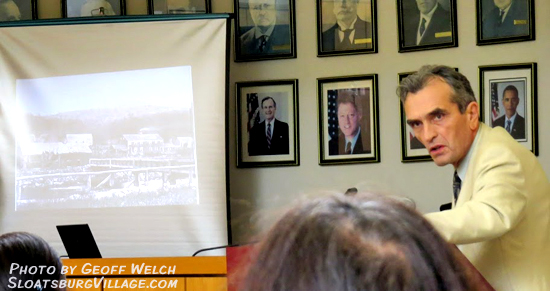
Winner of Rockland County’s 2013 Historical Preservation Leadership Award, Stead’s story also involves pulling together a coalition of allies to back a preservation and restoration project spanning several years that includes Ramapo Supervisor Christopher St. Lawrence. The effort included reconstituting an old saltbox house used by workers in Jeremiah H. Pierson’s early 19th-century Ramapo Iron Works just off Rt. 17 south of Sloatsburg on the Ramapo River.
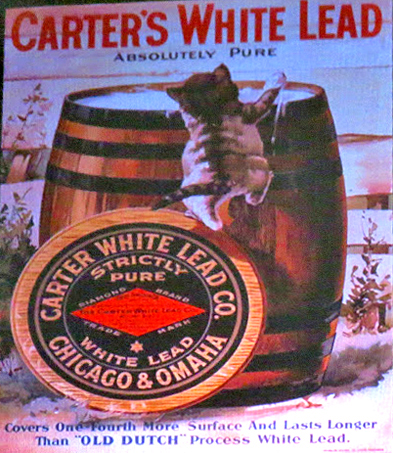
Still from Stead’s material that shows mid-twentieth century industry promoting lead paint products to consumers.
The worker’s saltbox house became the Ramapo Saltbox Environmental Research Center in Torne Valley, Hillburn, NY. And Stead’s vision eventually convinced the Ford Motor Company to clean up toxic paint sludge illegally dumped from Ford’s Mahwah automobile plant throughout Torne Valley and Hillburn, as well as Ringwood, in the 1960s and ’70s. To date, more than 40,000 tons of hazardous waste have been extracted from clean up sites around Torne Valley at a cost to Ford of close to 15 million dollars.
Stead said that Ramapo Town Supervisor Christopher St. Lawrence’s support and advocacy on the issue were essential.
The old paint sludge left behind ground contamination that had great impact among the Ramapough Nation and surrounding community, leaving a legacy of illness and devastation.
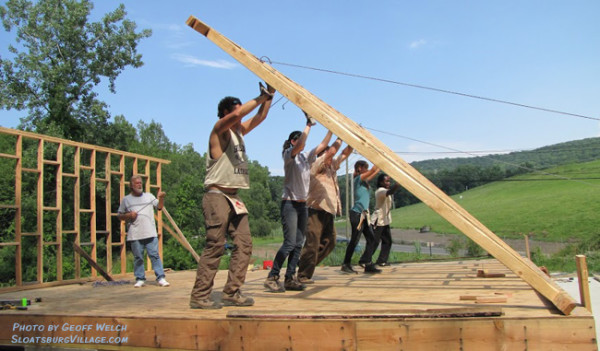
Students and volunteers raise the walls during the building of the Ramapo Saltbox Environmental Research Center in Torne Valley. / Photo by Geoff Welch
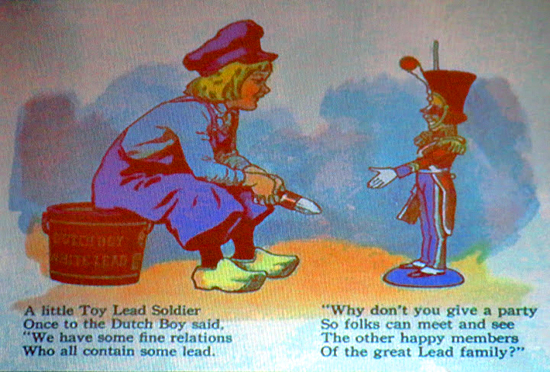
Still from Dr. Stead’s dissertation showing a Dutch Boy lead paint ad (click to enlarge). / via Geoff Welch
Dr. Stead’s work in Torne Valley has helped build the Ramapo Saltbox into a beacon of environmental study that also regularly hosts students from BOCES, Ramapo College in New Jersey and beyond. Stead also oversaw the planting of a Ramapough Medicine Garden in Torne Valley this past spring, at one of Ford’s former lead paint dump sites.
Covering half an acre, the Ford Motor Company built a large, raw-post and fenced-in garden that will feature Sweet Grass for basketry and smudging as well as herbs and other native plants and which will become part of the growing complex of historical features taking root in and around the Ramapo Saltbox.
Stead plans to publish his dissertation in book form.


